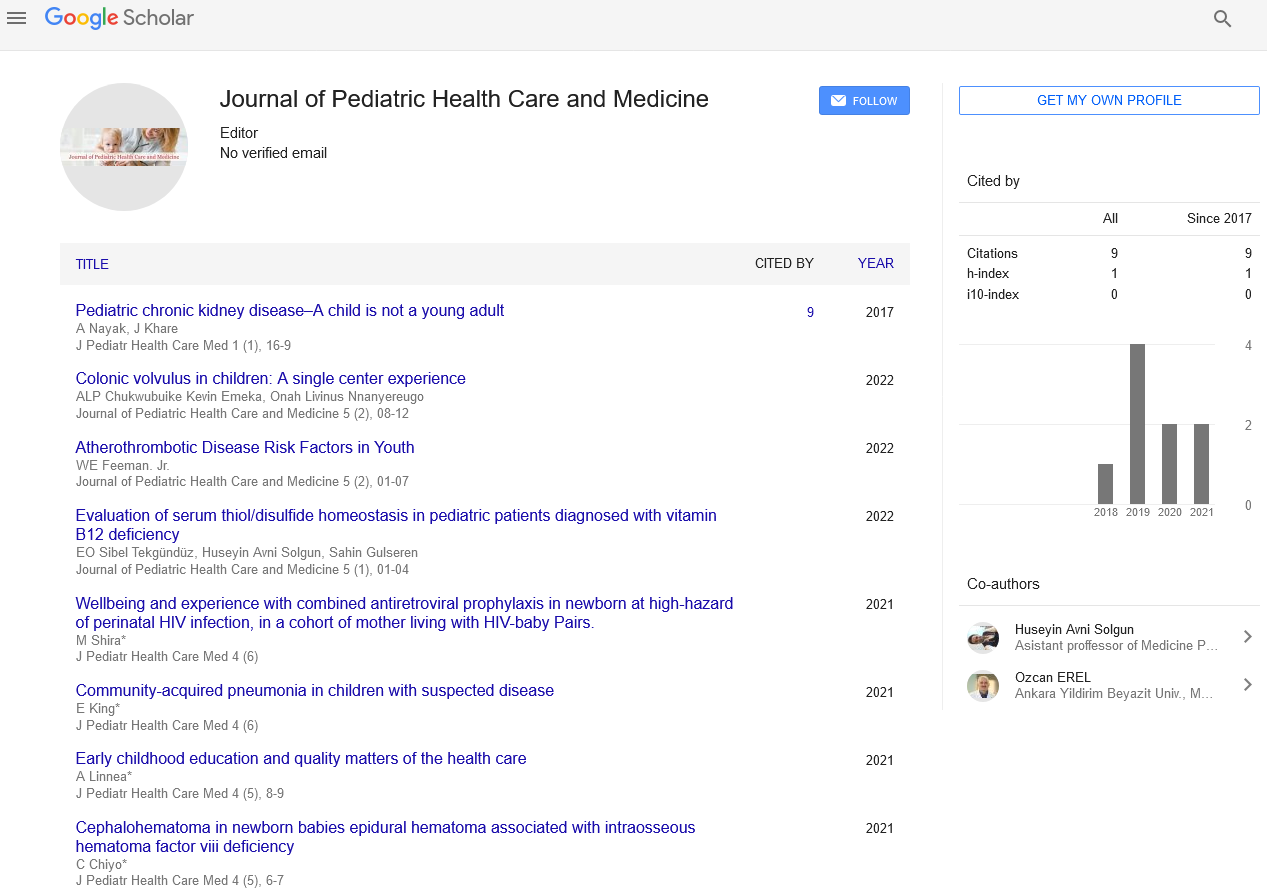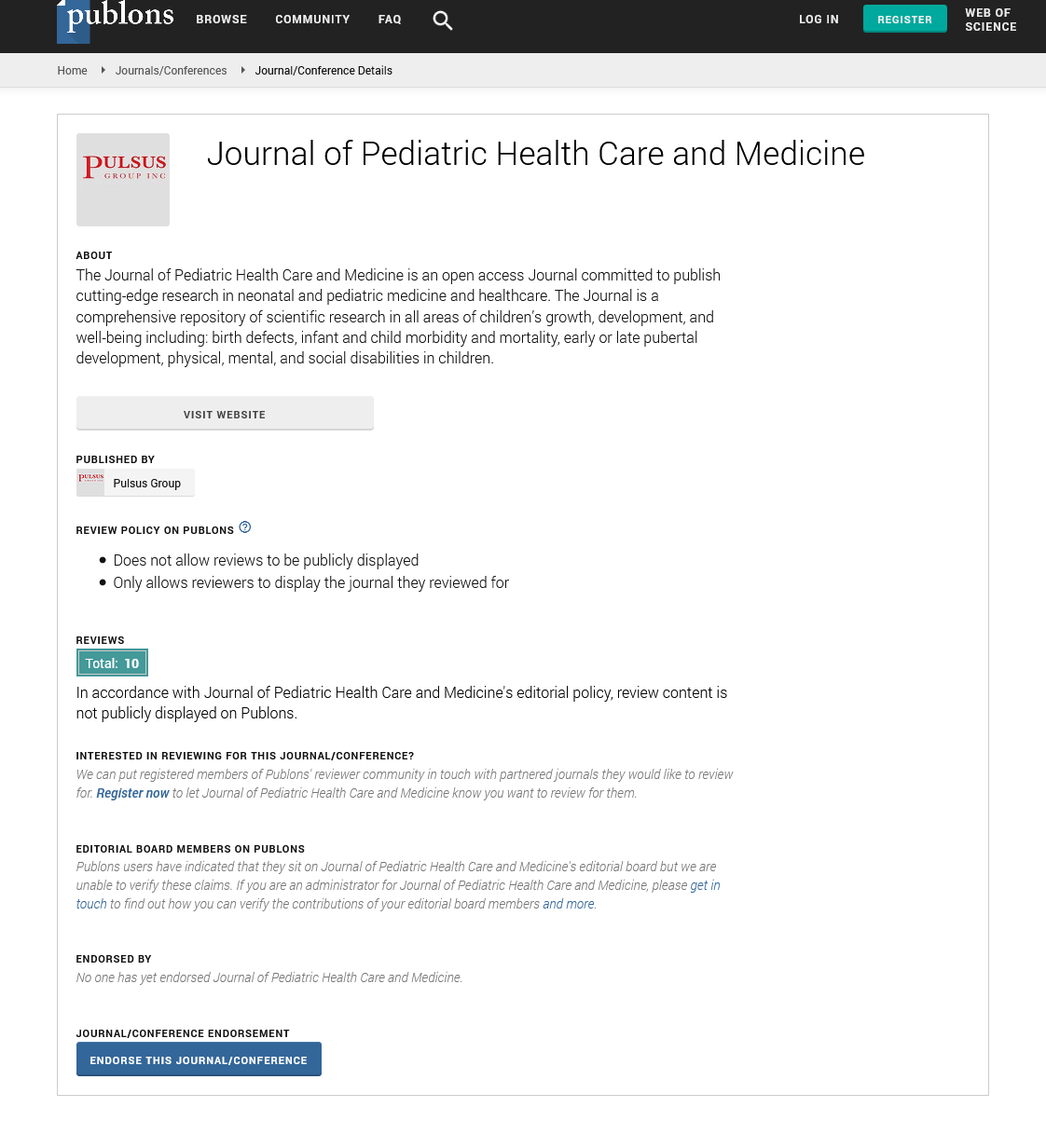Neonatology 2016: CentoICU: A time sensitive targeted panel approach for genetic testing in neonatal and pediatric medical care units
Received: 30-Dec-2020 Accepted Date: Jan 07, 2021; Published: 20-Jan-2021
Citation: none
This open-access article is distributed under the terms of the Creative Commons Attribution Non-Commercial License (CC BY-NC) (http://creativecommons.org/licenses/by-nc/4.0/), which permits reuse, distribution and reproduction of the article, provided that the original work is properly cited and the reuse is restricted to noncommercial purposes. For commercial reuse, contact reprints@pulsus.com
Abstract
Whole exome and whole genome sequencing allows to searched for multiple genetic conditions during one step, reducing the time and price to achieve a diagnostic decision. These technologies have also entered the critical care units (including neonatal) where time to diagnosis is tremendously essential not only to direct treatment decisions and treatment efficacy but also to guage effectiveness of procedures like surgery or transplantation. While it isn't uncommon to use FISH, karyotyping, aCGH and single gene sequencing in these critical units, the emergence of NGS promises to spot both sequence variants with copy number variants within one test, making the whole procedure significantly simpler during a clinical setting. the bulk of the genetic disorders- especially autosomal recessive metabolic diseases or de novo cases- typically appear within the ICU without prior indication
Abstract
Whole exome and whole genome sequencing allows to searched for multiple genetic conditions during one step, reducing the time and price to achieve a diagnostic decision. These technologies have also entered the critical care units (including neonatal) where time to diagnosis is tremendously essential not only to direct treatment decisions and treatment efficacy but also to guage effectiveness of procedures like surgery or transplantation. While it isn't uncommon to use FISH, karyotyping, aCGH and single gene sequencing in these critical units, the emergence of NGS promises to spot both sequence variants with copy number variants within one test, making the whole procedure significantly simpler during a clinical setting. the bulk of the genetic disorders- especially autosomal recessive metabolic diseases or de novo cases- typically appear within the ICU without prior indication. Genetic testing is thus targeting a much bigger group of patients within the ICU where clinical features of the diseases are getting to be more prominent than before birth or start the primary time after delivery. this is often particularly of importance, when one is screening for complex neuromuscular disorders or metabolic abnormalities where quite one gene are often involved. CentoICUTM offers a targeted panel based solution for early and fast diagnosis of critically ill newborns and kids under 24 months. within the current format, this panel screens for several many diseases in but 4-7 days.
Aims & Objective
About 3 to 4% of newborns are going to be born with a genetic disorder or major congenital anomaly . Genetic disorders including congenital anomalies are a number one explanation for death. one among 20 newborn babies is admitted to an medical care Unit (ICU). Common presentations within the ICU are thanks to genetic diseases.
Methods
While it's not uncommon to use Karyotyping, FISH, aCGH and single gene sequencing in ICU, the emergence of Next Generation Sequencing (NGS) promises to detect both sequence variants with copy number variants within one test, making the entire procedure significantly simpler during a clinical setting. CentoICU™ offers a targeted panel based solution for early and fast diagnosis of critically ill newborns and youngsters but 24 months. within the current format, this panel screens for several many diseases in but 4–7 days. Selection criteria of targeted genes include early onset, severe disease, ICU related symptomatology and diseases/syndromes of differential diagnostic value.
Results
Using Illumina technology, CentoICU™ includes 806 genes from different categories including metabolic diseases, neurological disorders, muscular disorders, seizures disorders, kidney diseases, anemias, complex malformations, immunological disorders and mitochondrial disorders. Over 99% of these genes are covered by 100%. top quality variant annotation, variant prioritization by frequency and performance , phenotype filtering by Human Phenotype Ontology terms and variant classification using elaborated data bases like CentoMD™ cause a top quality report including phenotype associated pathogenic and certain pathogenic variants and a diagnostic interpretation considering all available data.
Conclusion
CentoICU™ is a superb account a selected, urgent, clinical question. it's recommended for newborns and youngsters but 24 months admitted to the ICU and presenting with unclear symptomatology. bit of fabric needed and short turnaround complete the benefits of the tactic . This work is partly 9th International Conference on Neonatology and Perinatology on November 28-29, 2016 Valencia, Spain
REFERENCES
- 1. Anazi S, Maddirevula S, Faqeih E, et al. Clinical genomics expands the morbid genome of intellectual disability and offers a high diagnostic yield. Mol Psychiatry. 2017; 22(4):615–624. doi: 10.1038/mp.2016.113.
- 2. Lionel AC, Costain G, Monfared N, et al. Improved diagnostic yield compared with targeted gene sequencing panels suggests a task for whole-genome sequencing as a first-tier genetic test. Genet Med. 2017 Aug; doi: 10.1038/gim.2017.119.
- 3. Stark Z, Tan TY, Chong B, et al. A prospective evaluation of whole-exome sequencing as a first-tier molecular test in infants with suspected monogenic disorders. Genet Med. 2016;18(11):1090–1096. doi: 10.1038/gim.2016.1.
- 4. Stavropoulos DJ, Merico D, Jobling R, et al. Whole-genome sequencing expands diagnostic utility and improves clinical management in paediatric medicine. Npj Genomic Med. 2016;1 15012.
- 5. Daoud H, Luco SM, Li R, et al. Next-generation sequencing for diagnosis of rare diseases within the neonatal medical care unit. Can Med Assoc J. 2016;188(11):E254–E260. doi: 10.1503/cmaj.150823.
- 6. Soden SE, Saunders CJ, Willig LK, et al. Effectiveness of exome and genome sequencing guided by acuity of illness for diagnosis of neurodevelopmental disorders. Sci Transl Med. 2014;6(265):265ra168– 265ra168. doi: 10.1126/scitranslmed.3010076.
- 7. Stark Z, Lunke S, Brett GR, et al. Meeting the challenges of implementing rapid genomic testing in acute pediatric care. Genet Med. 2018 Mar; doi: 10.1038/gim.2018.37.
- 8. Mullin E. Fast genome tests are diagnosing a number of the sickest babies in time to save lots of them. [Accessed March 26, 2018];MIT Technology Review. 9. Wilkinson D, Petrou S, Savulescu J. Expensive care? Resource-based thresholds for potentially inappropriate treatment in medical care . Monash Bioeth Rev. 2018 Jan; doi: 10.1007/s40592-017-0075- 5.
- 10. Wilkinson D, Savulescu J. Ethics, Conflict and Medical Treatment for youngsters From Disagreement to Dissensus. Churchill Livingstone; Forthcoming.
- 11. Wilkinson DJ, Barnett C, Savulescu J, Newson AJ. Genomic intensive care: should we perform genome testing in critically ill newborns? Arch Dis Child - Fetal Neonatal Ed. 2016;101(2):F94–F98. doi: 10.1136/archdischild-2015-308568.
- 12. Deem MJ. Whole-Genome Sequencing and Disability within the NICU: Exploring Practical and Ethical Challenges. PEDIATRICS. 2016;137(Supplement):S47–S55. doi: 10.1542/peds.2015-3731I.
- 13. Wilkinson D. Death or Disability? The “Carmentis Machine” and Decision-Making for Critically Ill Children. 1st ed. Oxford, UK: Oxford University Press; 2013.
- 14. Newson AJ, Schonstein L. Genomic Testing within the Paediatric Population: Ethical Considerations in Light of Recent Policy Statements. Mol Diagn Ther. 2016;20(5):407–414. doi: 10.1007/s40291-016- 0210-7.
- 15. Dondorp WJ, de Wert GMWR. The “thousand-dollar genome”: an ethical exploration. Eur J Hum Genet EJHG. 2013;21(Suppl 1):S6–26. doi: 10.1038/ejhg.2013.73.
- 16. Bernhardt BA, Roche MI, Perry DL, Scollon SR, Tomlinson AN, Skinner D. Experiences with obtaining consent for genomic sequencing. Am J Med Genet A. 2015;167A(11):2635–2646. doi: 10.1002/ajmg.a.37256.
- 17. Burke K, Clarke A. The challenge of consent in clinical genome-wide testing. Arch Dis Child. 2016;101(11):1048–1052. doi: 10.1136/archdischild-2013-304109.






